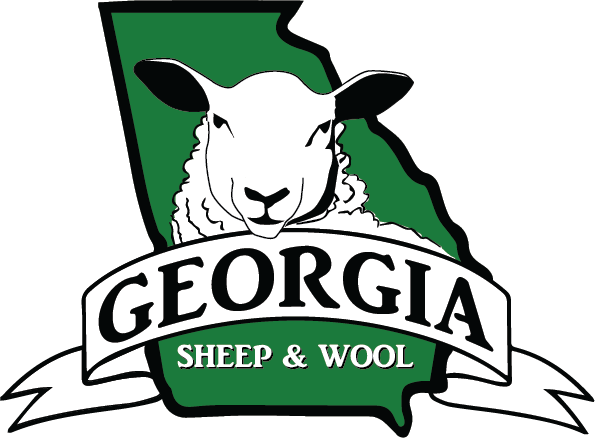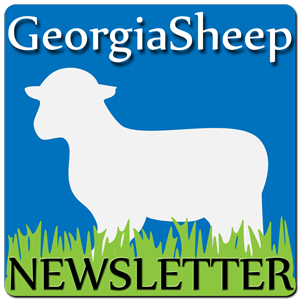Georgia Sheep and Wool Growers Association

The Georgia Sheep and Wool Growers Association started in the 1950's. Our purpose is to promote healthy sheep and successful, well-informed shepherds.
Our goals are to:
-
Learn and share information about the sheep and wool industry.
-
Network with other producers, breeders, sheep and wool enthusiasts.
-
Explore business opportunities and resources to increase profitability and public awareness.
-
Expand the sheep industry in Georgia and beyond.
We host an annual spring meeting that features a panel of expert resources. We share resources via the website, coordinate shearer schedules, participate in a multi-state wool pool, and provide informal mentoring throughout the year
Members represent a variety of backgrounds, sheep breeds and flock sizes. Whether you raise sheep for meat … wool … show … breeding stock … or eco-friendly lawn mowers, we value your involvement, and want to help you become the best shepherd you can be!
Meet the Board
Sheep and Georgia HistorySheep have been raised in Georgia and the Southeast for centuries. Writings from the 1700s and 1800s show that lamb and wool production were important in those societies… From a national high of nearly 40 million sheep in the 1940s, there are now about 7.5 million in the United States and fewer than 10,000 in Georgia (2013). Long before there were sheep in Georgia, there were sheep in Mesopotamia: Sheep were domesticated 10,000 years ago in Central Asia, but it wasn't until 3,500 B.C. that man learned to spin wool. Sheep helped to make the spread of civilization possible. … There are many references to sheep in the Bible, especially in the Old Testament. Sheep production is man's oldest organized industry. Wool was the first commodity of sufficient value to warrant international trade. Sheep in the New World In the 1400's, Queen Isabella of Spain used money derived from the wool industry to finance Columbus and other conquistadors' voyages. In 1493 on his second voyage to the New World, Columbus took sheep with him as a "walking food supply." He left some sheep in Cuba and Santo Domingo. In 1519, Cortez began his exploration of Mexico and the Western United States. He took with him sheep that were offspring of Columbus' sheep. These sheep are believed to be the descendants of what are now called "Churros." The Navajo Churro is the oldest breed of sheep in the U.S. The Gulf Coast (or Florida) Native is another breed of sheep believed to be directly descended from sheep brought to the New World by Spanish and French explorers. Feral until the early 20th century, Gulf Coast Native sheep are known for their natural resistance to worm parasites. A shepherd and his dog keep watch Early American history During the 16th and 17th centuries, England tried to discourage the wool industry in the American colonies. Nonetheless, colonists quickly smuggled sheep into the States and developed a wool industry. By 1664, there were 10,000 sheep in the colonies and the General Court of Massachusetts passed a law requiring youth to learn to spin and weave. By 1698, America was exporting wool goods. England became outraged and outlawed wool trade, making it punishable by cutting off a person's right hand. The restrictions on sheep raising and wool manufacturing, along with the Stamp Act, led to the American Revolutionary War. Thus, spinning and weaving were considered patriotic acts. Even after the war, England enacted a law forbidding the export of any sheep, but wethers. Presidential shepherds George Washington raised sheep on his Mt. Vernon estate. Thomas Jefferson kept sheep at Monticello. Presidents Washington and Jefferson were both inaugurated in suits made of American wool. James Madison's inaugural jacket was woven from wool of sheep raised in his home in Virginia. President Woodrow Wilson grazed sheep on the White House lawn. | Unidentified photo: History of Sheep Sheep TimelineSource: California Wool Growers Association 8000 BC - Sheep were domesticated 4000 BC - Wool clothing was worn in Babylon (Land of Wool) Yarn was spun on drop spindles. 55 BC - Sheep were introduced to the British Isles. 1200 AD - The Spinning Wheel was invented. 1493 AD - Columbus took sheep to Cuba on his second voyage. 1549 AD - Cortez took sheep to Mexico. Sheep from these flocks eventually found their way to the southwest where they were the beginning of the Navajo weaving that is still treasured today. Early 1600's - England forbid the import of sheep to America because they wanted to control the production of clothing for export to the Colonies and keep them dependent on England. During this time, wool fabric made up two-thirds of England's foreign trade. 1635 AD - The Pilgrims bought sheep from the Dutch and smuggled them into the Colonies. 1643 AD - There were 1000 sheep in Massachusetts. Twenty-one years later there were over 100,000 sheep. 1664 AD - The colonies passed a law requiring youth to learn to spin and weave wool so the colonists could become self-sufficient. It took four girl spinners to produce enough yarn to keep one boy weaver busy. Mid 1700's - As the American wool trade grew the English made raising sheep and trading in wool a crime punishable by cutting the offender's right hand off. English Restrictions of sheep and wool was one of the major factors leading to the American Revolution. Wearing homespun wool garments became a symbol of protest against England. In England textile technology began to develop rapidly. But the export of this technology to the colonies was forbidden. 1733 AD - The flying shuttle was developed. 1764 AD - The invention of the spinning jenny. 1769 AD - The water frame was invented. 1769 AD - The first American woolen mill was established. After the Revolutionary War in the 1790's the U.S. textile industry developed rapidly. As frontier farmers moved westward, sheep always went with them providing food and fiber. Today sheep are raised in all 50 states. Flocks vary in size from a few head to 10,000. Photo below: Sheep Pasture (Central Park New York) NY Archives
Sheep-fold in 1872 //commons.wikimedia.org |


